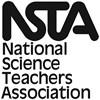Science for the Next Generation: Preparing for the New Standards
“The old models of teaching as simply telling, and learning as passive sit-and-get listening, will not meet the needs of tomorrow’s citizens.”
—Thomas O’Brien in the Overview to Science for the Next Generation
Preparing for tomorrow is what this multifaceted book is all about. If you’re an elementary school teacher, you’ll see your unique perspective reflected in material designed to get you ready for both a new generation of science students and the new Framework for K–12 Science Education and Next Generation Science Standards (NGSS).
“The old models of teaching as simply telling, and learning as passive sit-and-get listening, will not meet the needs of tomorrow’s citizens.”
—Thomas O’Brien in the Overview to Science for the Next Generation
Preparing for tomorrow is what this multifaceted book is all about. If you’re an elementary school teacher, you’ll see your unique perspective reflected in material designed to get you ready for both a new generation of science students and the new Framework for K–12 Science Education and Next Generation Science Standards (NGSS).






 From reading various tweets and blogs, I often find interesting projects and applications. Some are definitely related to science and math, while others have more of a tangential application. I recently found one of the latter (and it’s pretty cool).
From reading various tweets and blogs, I often find interesting projects and applications. Some are definitely related to science and math, while others have more of a tangential application. I recently found one of the latter (and it’s pretty cool).


